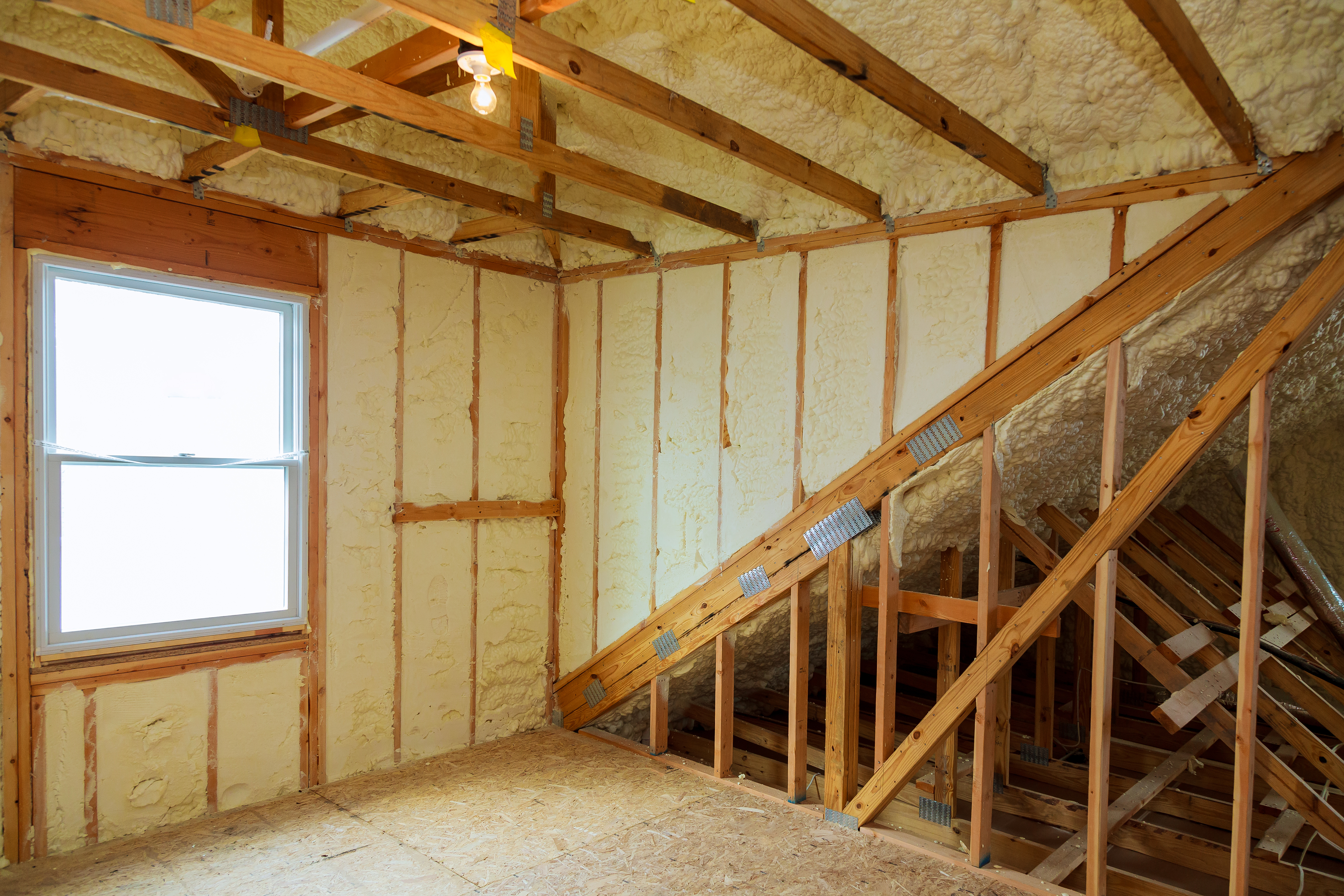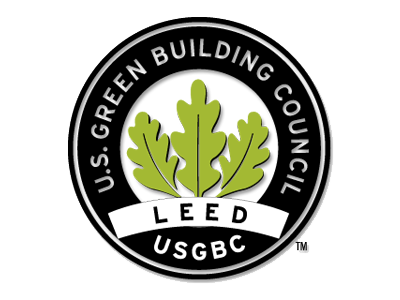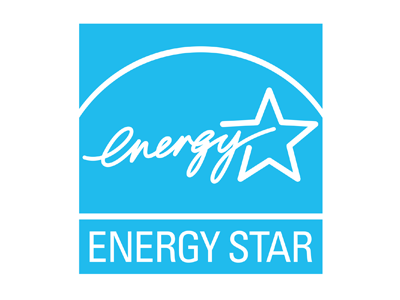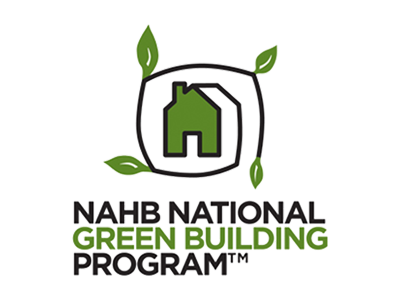- >CALL ☎
- >TEXT 💬
Residential Spray Foam Insulation Services

Residential Insulation
Comfort & Savings for Your Home
Insulation experts in .

Most homes older than five years likely need more insulation to meet current efficiency standards. Upgrading to new, ENERGY STAR qualified insulation can reduce your home's annual heating/cooling utility bill by up to 20%*

Residential Insulation Contractor
Say goodbye to drafts, fluctuating temperatures, and high utility costs.
Spray Foam Advantages
Unlike traditional insulation materials, spray foam creates an airtight seal, conforming to every crevice and irregular surface. This continuous barrier eliminates air leakage, a major source of energy waste in houses. This seal eliminates drafts, hot spots, and inconsistent temperatures.
By stopping heat transfer, spray foam helps maintain a consistent indoor temperature year-round, making your home more comfortable and significantly more energy efficient. It's a long-lasting solution that pays for itself over time through reduced energy consumption.
's spray foam creates an unparalleled airtight seal, highest R-value per inch, significant energy bill reductions, moisture control (especially closed-cell), improves indoor air quality by blocking allergens and pollutants, adds structural integrity to your home (closed-cell), and offers long-lasting performance without settling.
's foam emits no HCFCs, VOC's, or Formaldehyde during application or throughout the life of the product.
Spray Foam Application
Preparation
We begin by carefully preparing the work area, covering floors and belongings to protect your home. Any necessary venting or sealing of penetrations is addressed.
Mixing & Application
Using specialized equipment, two liquid components are mixed at the spray nozzle and applied directly to the surfaces (walls, ceilings, rim joists, etc.).
Expansion & Curing
Upon contact, the liquid rapidly expands, often up to 100 times its original volume, filling every void and cavity. It then quickly hardens into a rigid or semi-rigid foam.
Trimming & Cleanup
Once cured, any excess foam is trimmed away, creating a smooth and even surface. Our team then conducts a thorough cleanup, leaving your home neat and tidy.
Quality Assurance
We perform a final inspection to ensure the insulation is properly installed and meets our rigorous quality standards, providing you with peace of mind.
Open Cell Spray Foam (1/2 lb.)
Open-cell spray foam is a lighter, more flexible insulation material with a softer, spongy texture. Its cells are intentionally left open, allowing air to fill the cavities. While its R-value per inch is lower than closed-cell, open-cell foam still provides excellent thermal performance by creating a highly effective air barrier.
Its pliable nature allows it to expand significantly, making it ideal for filling irregular cavities and hard-to-reach areas. Open-cell foam also boasts excellent sound-dampening properties, making it a great choice for spaces where noise reduction is a priority. It is breathable, allowing moisture to escape, which can be beneficial in certain climates and applications.
Open-cell is typically more cost-effective per board foot and is often chosen for interior wall cavities, attics, and ceilings where a vapor barrier is not the primary concern.
Open-Cell: R-3.6 to R-4.3 per inch (more flexible, good sound barrier).
Closed Cell Spray Foam (2 lb.)
Closed-cell spray foam is a rigid, dense insulation material with a compact cell structure, making it incredibly strong and durable. Each cell is completely sealed, trapping a gas that contributes to its high R-value per inch. This makes it an excellent choice where space is limited but maximum thermal performance is required.
Beyond its superior insulating properties, closed-cell spray foam also acts as a powerful vapor barrier, resisting moisture penetration and helping to prevent mold and mildew growth. Its rigidity adds significant structural integrity to walls and roofs, making it ideal for homes in areas prone to high winds or for applications requiring enhanced structural support.
It's often preferred for exterior applications, foundation walls, and situations where moisture control is critical, such as cold storage facilities or industrial process areas.
Closed-Cell: R-6.0 to R-8.0 per inch (denser, adds structural strength, moisture barrier).
6 Benefits of Insulating with Spray Foam:
Significant Energy Savings:
Enjoy lower heating and cooling bills every month due to superior thermal performance and airtight sealing.
Enhanced Home Comfort
Eliminate drafts, cold spots, and inconsistent temperatures for a more comfortable living environment year-round.
Reduced Noise Transmission
Creates an excellent sound barrier, dampening outside noise and reducing sound transfer between rooms.
Moisture & Pest Resistance
Helps prevent moisture intrusion and doesn't provide a food source for pests, deterring their entry.
Improved Indoor Air Quality
Acts as a barrier against allergens, dust, and pollutants, creating a healthier home for your family.
Increased Structural Integrity
Closed-cell foam adds rigidity and strength to building envelopes.
Free Estimates |
Discover your insulation options with a no-cost, in-home visit from one of our licensed specialists. Our estimates include fair, upfront pricing with no hidden costs and a realistic project timeline. We'll email your comprehensive estimate directly to you.
Frequently Asked Questions
spray foam insulation is professionally installed at the same point in the construction cycle as other types of insulation. That is, it should be installed after the rough plumbing, electrical wiring, and heating and air conditioning ducts have been installed, but before the interior walls are completed in new home construction. In some cases spray foam also can be applied in older homes, to the inside of roofs and under floors after construction has been completed.
A two-part mixture is applied by trained applicators to the inside surface of exterior walls, to the underside of the roof, and beneath floors in basements and crawlspaces. The spray mixture expands rapidly to fill all cracks and voids, completely and permanently adhering to wood, masonry, metal studs and joists.
There are two basic types: closed-cell, rigid spray foam and "soft" or semi-flexible open-cell spray foams. See the article Learning the Difference between 1/2-lb and 2-lb Spray Polyurethane Foam for more information.
Both systems offer significant advantages over fiberglass batting: ability to air seal; ability to fill cracks and conform to odd shaped cavities; and ability to hold their shape over time and under adverse conditions.
But only closed-cell foam has the thermal insulation value (R-value) to bring your home up to Energy Star® standards with only one-half the thickness required for fiber insulations.
In addition, closed-cell foam products increases the strength of you wall system (it's approximately doubled) and increase the water resistance of your home's exterior.
Unlike cellulose and fiberglass materials, closed-cell foam is impervious to water absorption and wicking. Yet, like Gortex® fabric, the closed-cell structure allows the passage of water vapor (high energy particles) to allow your home envelope to "breathe".
Liquid water has much larger particles and is unable to pass into or through a closed-cell foam barrier.
-
You won't need house wrap with our system.
The air and moisture sealing effects of the spray polyurethane insulation are far superior to what house wraps can do. Don't waste your money on house wrap if you are insulating with spray polyurethane. -
You can encapsulate your entire exterior house shell with spray polyurethane.
This reduces energy loss from recessed lights and drop ceilings while minimizing any chance of frozen pipes in colder climates. In effect, this creates conditioned space everywhere including attics, basements, and crawlspaces. When ductwork is run through these areas, it is kept within conditioned space, substantially increasing the energy efficiency of your home. -
Spray polyurethane insulation will conform to any size or shape cavity.
Bay windows, oval windows, angled walls, sloped ceilings, or any other unusual framing designs can be well insulated and tightly sealed the same as the uniform spaced stud walls.
Several:
Our spray polyurethane insulation is sprayed on as a liquid which reacts and expands in place. This expansion action also seals all of the cracks and crevasses in your wall's exterior sheathing. The result is that air can no longer slip in: your house will be less drafty and more comfortable.
Air leakage can also introduce moisture into the wall cavity, resulting in wet insulation and mold and mildew. With the sealing effects of our spray polyurethane insulation, this will not be a concern.
Most house design professionals will advise you to seal the house structure as tight as possible and provide the necessary ventilation through the heating and air conditioning system.
Many systems employ an "air exchanger" which is designed to pre-condition (either warm or cool) the incoming outside air with the outgoing exhaust air.
In this manner, you can build an extremely energy efficient exterior shell using spray polyurethane foam while still providing controlled and energy efficient ventilation.
Yes. Building codes provide for the use of spray polyurethane insulation in the Foam Plastic section. This section of the code also describes the use of thermal barriers.
Normally spray polyurethane insulation is installed at the same point in the construction cycle as other types of insulation. That is, it should be installed after the rough plumbing, electrical wiring, and heating and air conditioning ducts have been installed.
If you decide to seal the entire exterior house shell with spray polyurethane, spray insulation may need to be applied in some areas before the ductwork is installed.
Yes. A popular retro-fit use for spray foam insulation calls for foam to be sprayed directly to the underside of roofing system.
This replaces the conventional blown in insulation used in the ceilings. Spray Foam can also be applied in the basement / crawlspace to eliminate air infiltration from the ground.
Our newest technology is Injection Foam; injection foam is used to fill existing walls by drilling small holes and injecting the foam from the outside of the structure.
- Glass fiber batts will not stop air leakage (it might filter out some dirt and dust).
- Blown-in cellulose will slow down air leakage.
- Spray polyurethane insulation will fully stop air leakage.
- Glass fiber batts have an R-value of about 3.5 (1-inch thickness).
- Blown-in cellulose has an R-value of about 3 to 4 (1-inch thickness).
- Spray applied polyurethane insulation has an R-value of 6.5 to 7 (1-inch thickness).
- Glass fiber batts can sag over time.
- Blown-in cellulose can settle over time.
- Spray polyurethane insulation completely adheres to wood and sheathing and is rigid; the result is a permanent barrier to heat loss and air entry.
- Spray polyurethane insulation will add strength and rigidity to your house. Glass fiber batts and blown-in cellulose will not.
Air Leakage:
R-value:
Lasting Ability:
Yes! The installed cost of spray polyurethane is somewhat higher than traditional fiber batts or blown-in cellulose. However, the higher initial cost is partially offset because you need not ventilate the roof, the HVAC system is downsized and you will save in your heating fuel and electric bills.
Studies suggest that homes insulated with spray polyurethane use 35 to 60 % less energy than homes insulated with conventional insulation. Your savings may be greater or less depending on your life style, appliances, house site, number and size of windows, etc.
When first installed, spray polyurethane foam's R-value is about 10 for a one-inch thickness.
Over time, the R-value drops to between 6.5 and 7.0 (one inch) and stabilizes at that value. The time it takes to reach an R-value of 6.5 to 7.0 depends on a variety of factors, including total foam thickness.
We report a six-month aged R-value. Many industry studies indicate that a one-inch thick sample of foam will stabilize after six months and maintain that approximate R-value for decades.
Spray polyurethane can be applied directly to electrical wiring. Recessed lights or other fixtures may require a certain amount of air circulation around them for cooling purposes.
In these cases, a box can be build around the fixture with gypsum wall board; then spray foam can be sprayed directly to the outside of the box.
Not that we're aware of. We've looked at 20-year old spray foam projects and we have not observed any signs of deterioration. We expect our spray polyurethane insulation system to insulate and seal your home for the life of the house.
Spray polyurethane foam was commercially developed in the United States in the mid-1960's. Homes have been insulated with spray foam since that time.
Most moisture problems in houses are due to moisture entry from air leakage. Because spray polyurethane insulation provides such an excellent air barrier, this source of moisture is virtually eliminated.
Other potential sources of moisture can be excluded with proper construction techniques and materials. Unusual building use (such as freezers or swimming pool buildings) may require a vapor retarder.
No.
Required equipment elements include a plural component proportioner pump with heaters, dual high pressure heated hoses, high pressure mixing and spray gun, and feed pumps and hoses. In addition, an air compressor and electrical generator may be needed.
Not practically. Spray polyurethane application requires complex equipment and a skilled installer.
Yes! Our closed cell foam is rigid and structural. Your walls will be more resistant to winds and you'll notice less creaking and shaking when doors are slammed or when the kids are romping about.
Quite quickly. A typical 2000 sf house can be fully prepped and insulated with spray polyurethane in less than several days. Large houses or houses with complex design features could take longer.
Testimonials






